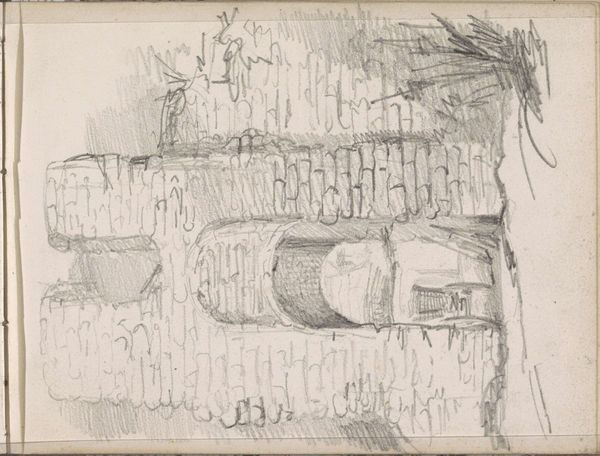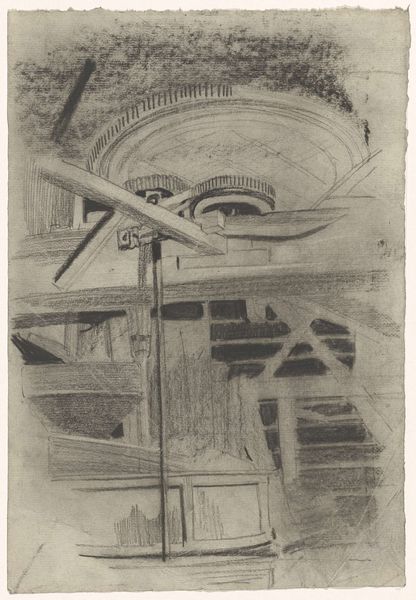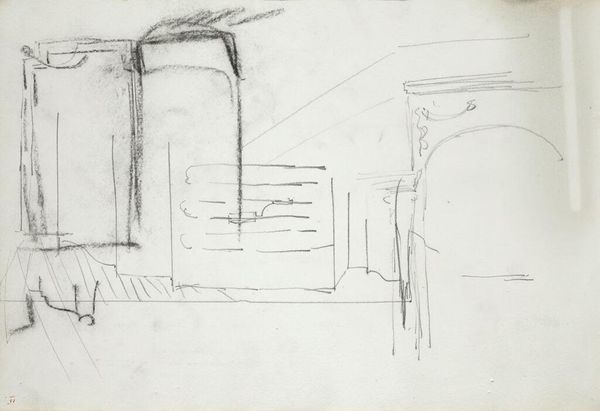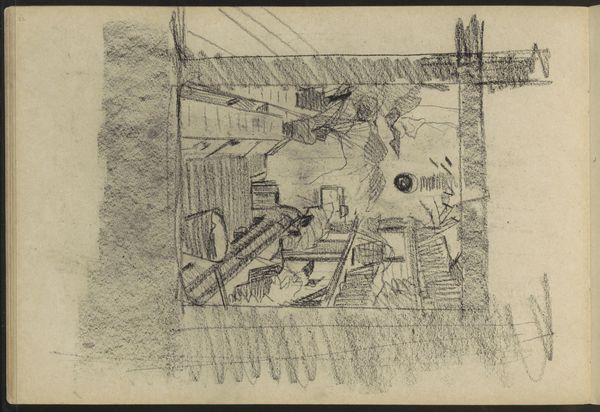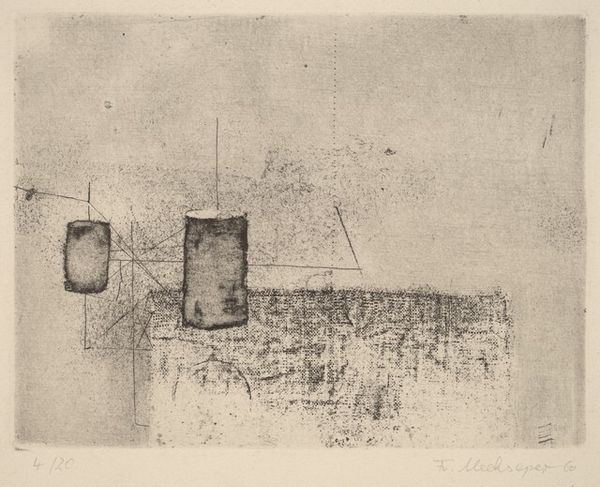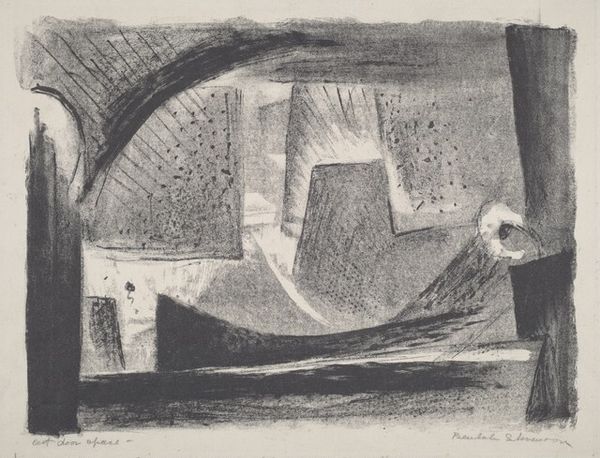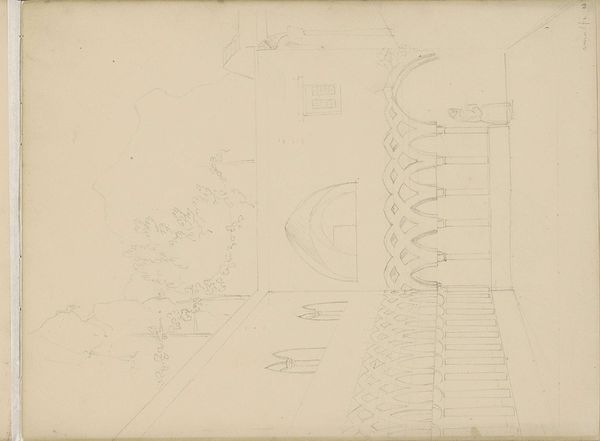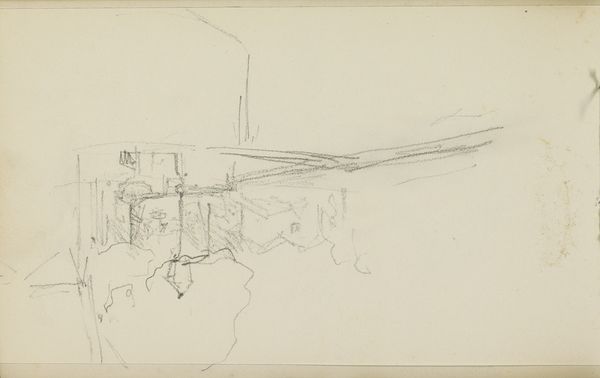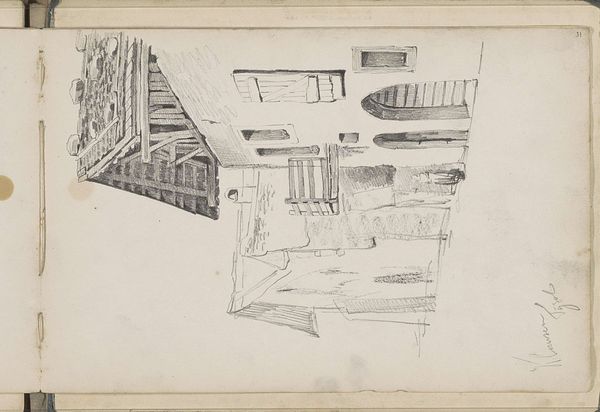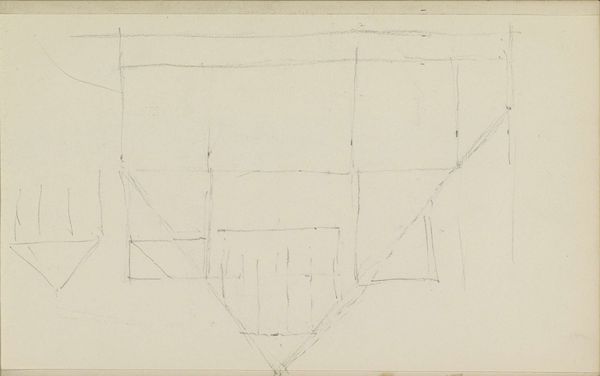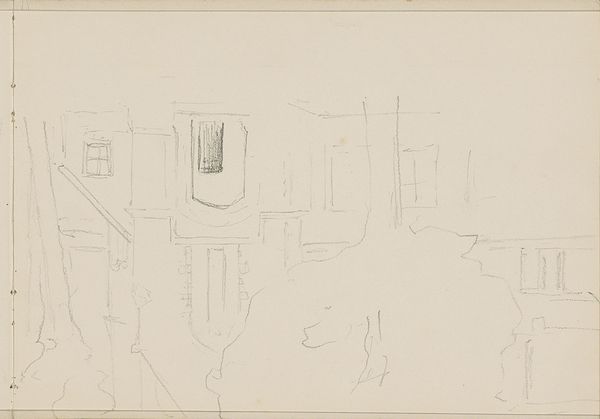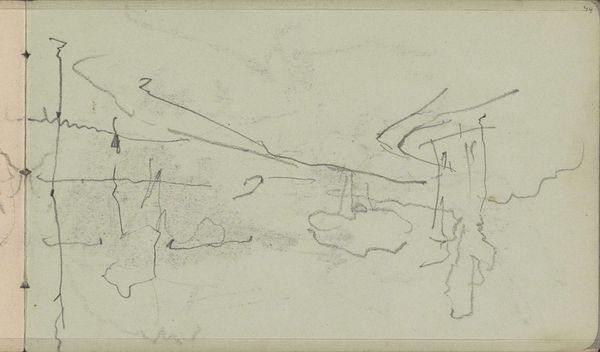
drawing, pencil
#
drawing
#
neoclacissism
#
pencil sketch
#
landscape
#
etching
#
geometric
#
pencil
#
watercolour illustration
Copyright: Rijks Museum: Open Domain
Curator: Jacobus van den Berg’s pencil drawing, "Courtyard with Fountain in Amalfi," dated 1830, presents a study in Neoclassical composition. It appears quite subdued, wouldn’t you say? Editor: Yes, strikingly so. The limited tonal range of the pencil lends an almost ghostly feel to the architectural rendering. But look closer: there’s a palpable sense of order and perhaps a commentary on the weight of history embedded in the lines. Curator: I’m immediately drawn to the textures he’s able to evoke with just a pencil. Notice how the rendering captures not just the forms of columns and archways, but also the very essence of stone, suggesting how the elements might have impacted it, the source of its erosion... It hints at a tangible history embedded in the materials themselves. Editor: The geometric forms feel significant here. The circle enclosing a distant landscape, and how it contrasts against the rigid verticals of the colonnade... There’s an almost dreamlike quality introduced, as if the classical ideals are now merely framed by nature. The courtyard and fountain serve, perhaps, as symbols of a lost or idealized era. Curator: Or an emerging market of printed imagery of continental landscapes, like this one, fueling demand from wealthy travelers and scholars who seek to experience such places indirectly through detailed depictions of architectural remains of old. Editor: I see your point. There's an underlying suggestion that the physical and intellectual consumption of art are tied together, that they represent distinct modes of interpreting the cultural weight and history within those landscapes. But I think it has an added, unique message, as it seems to use that geometric tension in a new, creative manner. Curator: Looking at the drawing itself as an object—its paper, the pencil lead, the labor that went into its making—one is compelled to contemplate its exchange value in the art market. Was this made as a preparatory study, a souvenir, or for display in and of itself? These material realities speak to its inherent value beyond just aesthetics or symbolism. Editor: Interesting point. Though I continue to think the composition carries its own meaning: this almost melancholic juxtaposition certainly tells a layered, fascinating story! Curator: I think that considering the processes and materials opens new lines of enquiry and, ultimately, deepens our engagement with the drawing and prompts more thoughts about the location and era in which it was created. Editor: For me, thinking through the forms and symbols at play enhances my appreciation for the continuity of classical themes while uncovering new, expressive depths within the artwork itself.
Comments
No comments
Be the first to comment and join the conversation on the ultimate creative platform.
